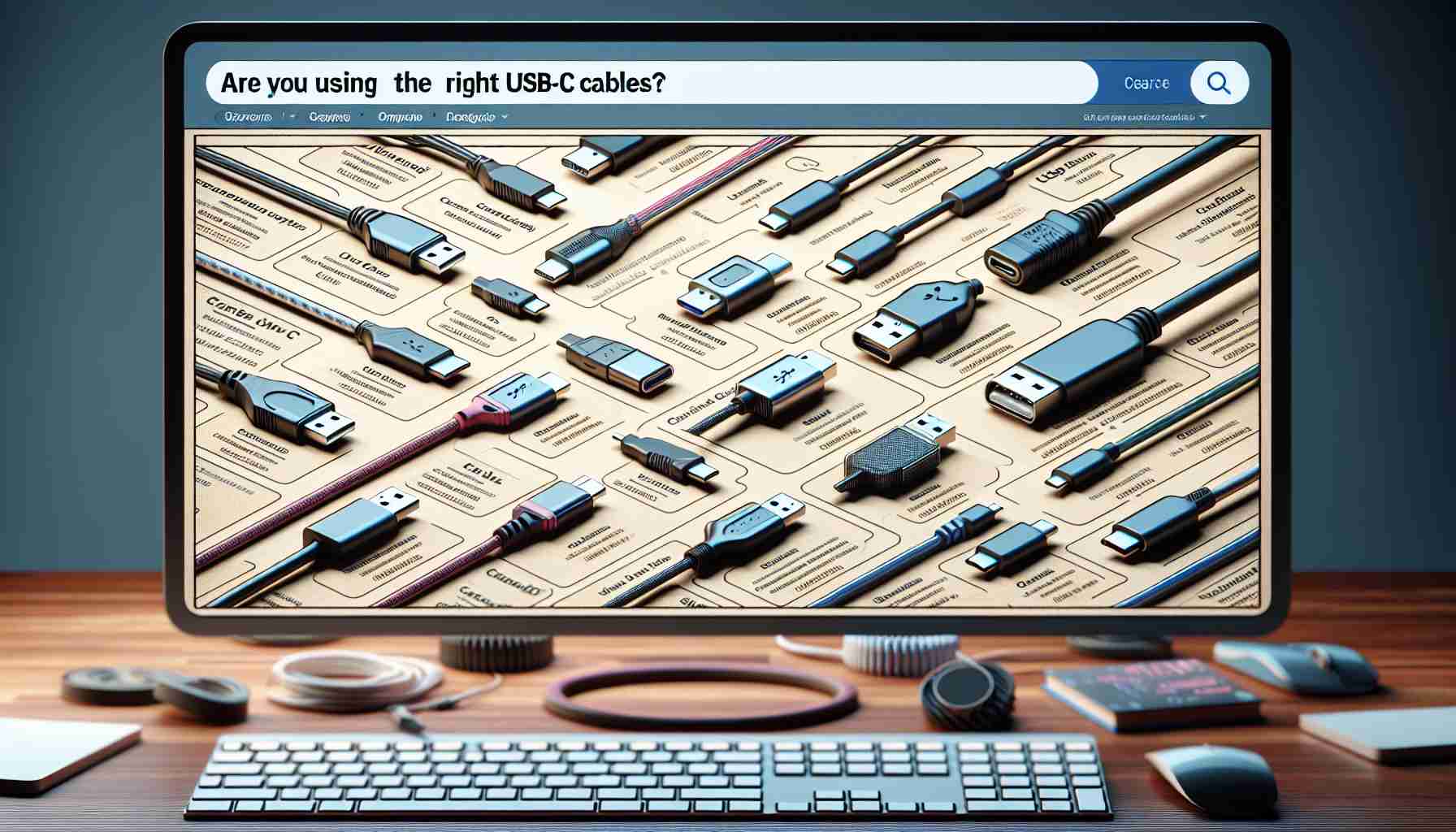The Rise of USB-C and What It Means for You
In the evolving world of technology, the USB (Universal Serial Bus) standard has become a lifeline for connecting various devices since its inception in the late ‘90s. The emergence of USB Type-C has revolutionized connectivity, seamlessly combining data transfer and charging capabilities. This compact connector is steadily replacing older USB types, such as Type-A and Micro USB, thanks to its speed and efficiency.
Governments worldwide, including those in the European Union and India, are mandating USB-C as the universal standard for handheld devices. This push has even prompted companies like Apple to adopt USB-C for their latest iPhone models, further solidifying its role in modern technology.
As USB-C cables become integral in our daily lives, choosing the right ones is paramount. To ensure quality, consumers should look for cables certified by the USB Implementers Forum (USB-IF). This certification guarantees that the cables meet the stringent standards necessary for optimal performance.
When searching for the best USB-C cables, focus on reputable brands like Anker, Belkin, and Amazon Basics. Many of these brands include the USB-IF certification logo on their packaging, making it easier to identify high-quality products. For those seeking additional assurance, the USB-IF’s product search page provides a list of verified cables, helping users make informed choices for their devices.
The Broader Implications of USB-C Adoption
The transition to USB-C signifies more than just a change in connectors; it represents a profound shift in the way society interacts with technology. As nations advocate for standardization, the global economy is likely to benefit from reduced manufacturing complexities and lower consumer costs. Standardizing through USB-C could streamline supply chains, fostering innovation in areas previously hindered by incompatible technologies. This could lead to an era of increased competition and reduced prices for consumers.
Moreover, the environmental ramifications of a universal standard cannot be overstated. The push towards USB-C can potentially curb electronic waste produced by outdated cables and chargers. By encouraging manufacturers to design devices compatible with this singular standard, the lifecycle of products is extended, thereby reducing the frequency of replacements and minimizing waste accumulation.
In terms of future trends, the adoption of USB-C may pave the way for advancements in energy delivery and data transfer speeds, allowing for more potent devices that prioritize efficiency. Continued advocacy for universality across tech devices may further enhance user convenience, ultimately shaping a more coherent electronic ecosystem.
As society embraces this shift, it’s evident that the implications of USB-C extend beyond mere convenience; they underscore a greater move towards sustainability and economic efficiency, reflecting a crucial evolution in our collective digital infrastructure.
The USB-C Revolution: What You Need to Know!
The Rise of USB-C: An Overview
The transition to USB Type-C has marked a significant shift in how we connect and power our devices. Known for its reversible design and robust capabilities, USB-C has outperformed its predecessors, such as Type-A and Micro USB, making it a preferred choice among manufacturers and consumers alike.
Key Features of USB-C
1. Speed and Efficiency: USB-C supports faster data transfer with potential speeds of up to 40 Gbps with the latest USB4 standard. This is a drastic improvement compared to older USB types, which typically maxed out at 5-10 Gbps.
2. Power Delivery: One of the standout features of USB-C is its Power Delivery (PD) protocol, allowing devices to charge at higher power levels (up to 100W). This means that laptops and other high-capacity devices can be charged quickly using a single cable.
3. Universal Compatibility: USB-C is not just limited to smartphones and tablets; it has the potential to connect a wide array of devices, including laptops, docking stations, and peripherals like printers and external hard drives.
Pros and Cons of USB-C
Pros:
– Reversible Design: No more fumbling to insert cables the correct way.
– Future-proofing: Increasing adoption among new devices means USB-C is likely here to stay.
– Versatility: One cable type for various devices reduces clutter.
Cons:
– Compatibility Issues: Not all USB-C cables support the same features. For example, some may only provide charging but not data transfer capabilities.
– Confusion Among Consumers: With various standards (USB 2.0, 3.1, 3.2, and USB4) under the USB-C umbrella, consumers must be cautious when purchasing cables.
Use Cases for USB-C
– Smartphones and Tablets: Most new models have adopted USB-C, allowing for universal chargers.
– Laptops: Many new laptops, including the MacBook and Dell XPS series, now rely exclusively on USB-C for charging and data transfer.
– Accessories: From external SSDs to adapters, USB-C has become the go-to for connecting peripherals.
Pricing Insights
USB-C cables vary in price, generally ranging from $10 to $30 for reputable brands. While cheaper options are available, investing in certified cables ensures longevity and performance.
Trends and Innovations
As the market shifts, new innovations are emerging around USB-C technology, such as:
– Multi-port hubs: Allowing users to connect multiple peripherals, power, and HDMI output through one USB-C port.
– High-resolution video: USB-C now supports video output up to 8K resolution, enhancing the multimedia experience.
Security Aspects
With the increasing use of USB-C, security concerns arise, particularly regarding counterfeit cables that can harm devices. Always choose cables from certified manufacturers to ensure safety and compatibility.
Predictions for the Future
The push for USB-C could lead to a more standardized approach across all electronic devices. As governments push for regulation, we can anticipate broader adoption and an eventual phase-out of older USB types.
For more information on USB-C standards and certification, explore the resources at the USB Implementers Forum.
Conclusion
The rise of USB-C is transforming user experiences across devices, providing faster connections and more efficient charging. As this technology continues to evolve, staying informed will help consumers make the best choices for their gadgets.



